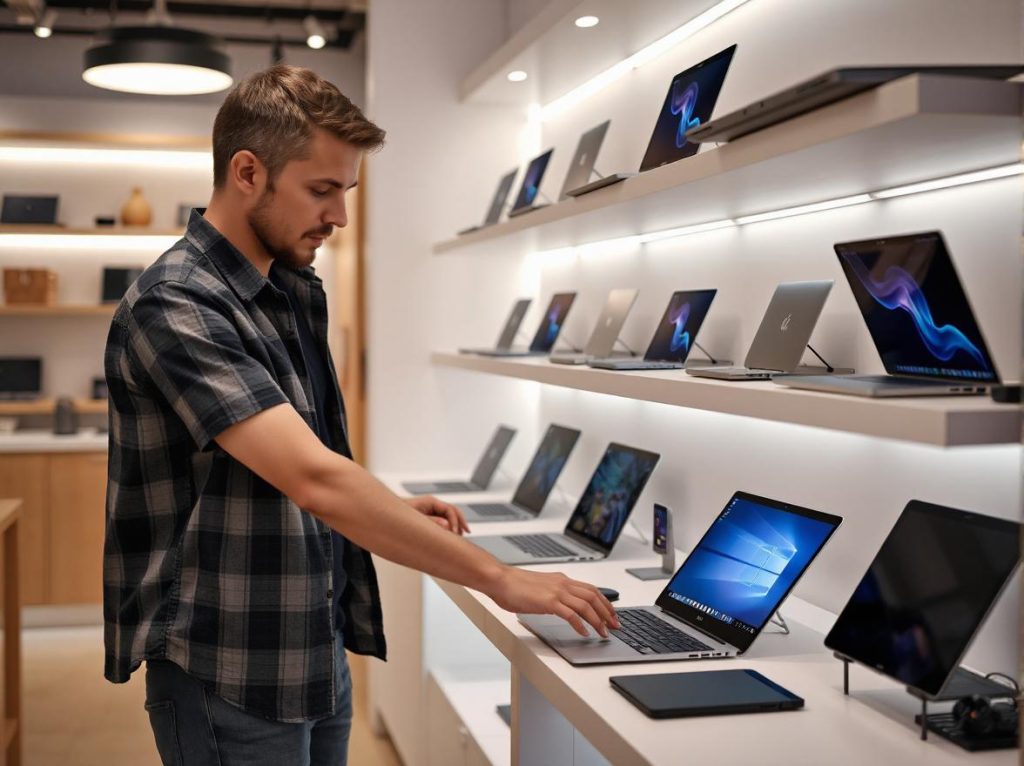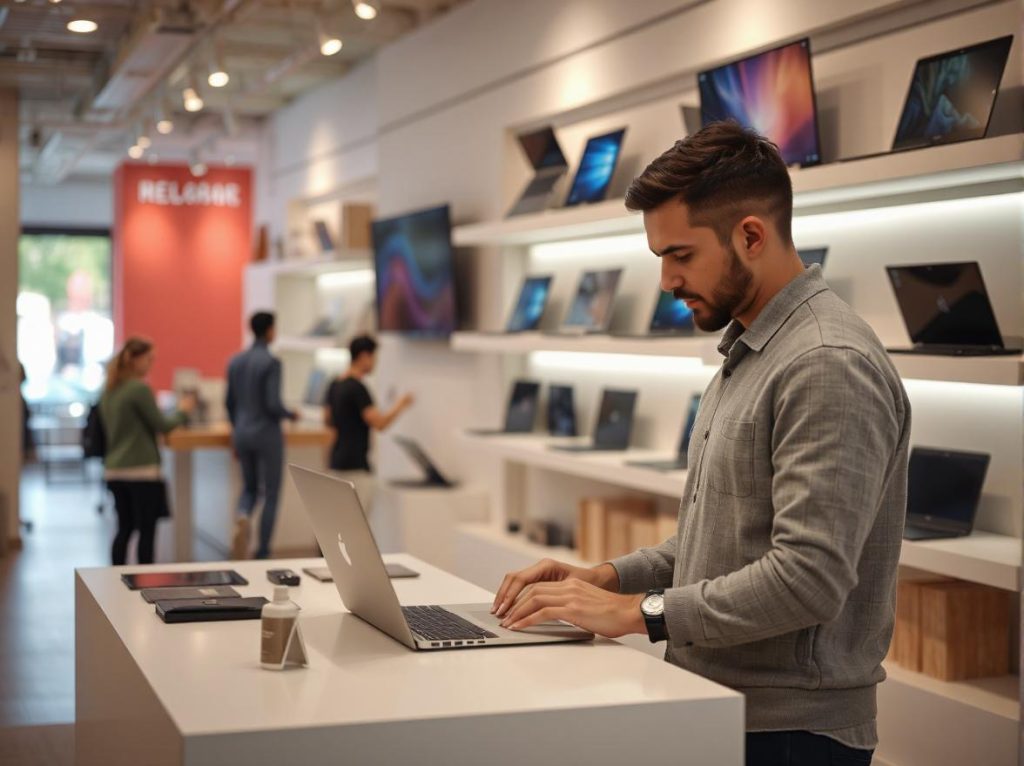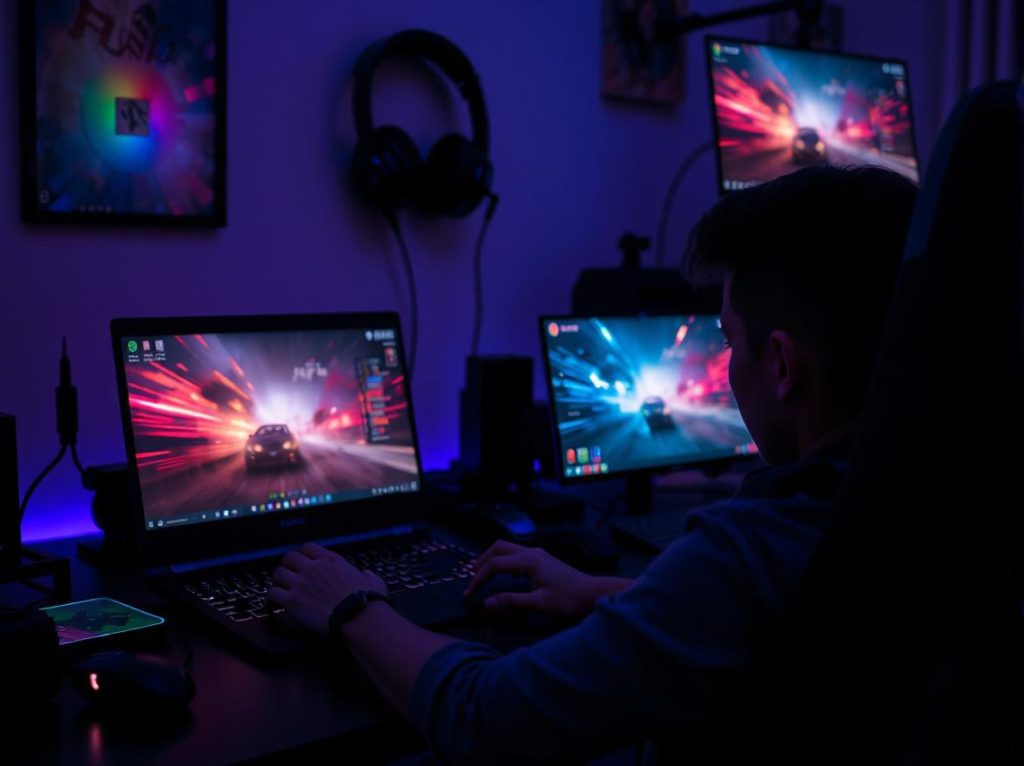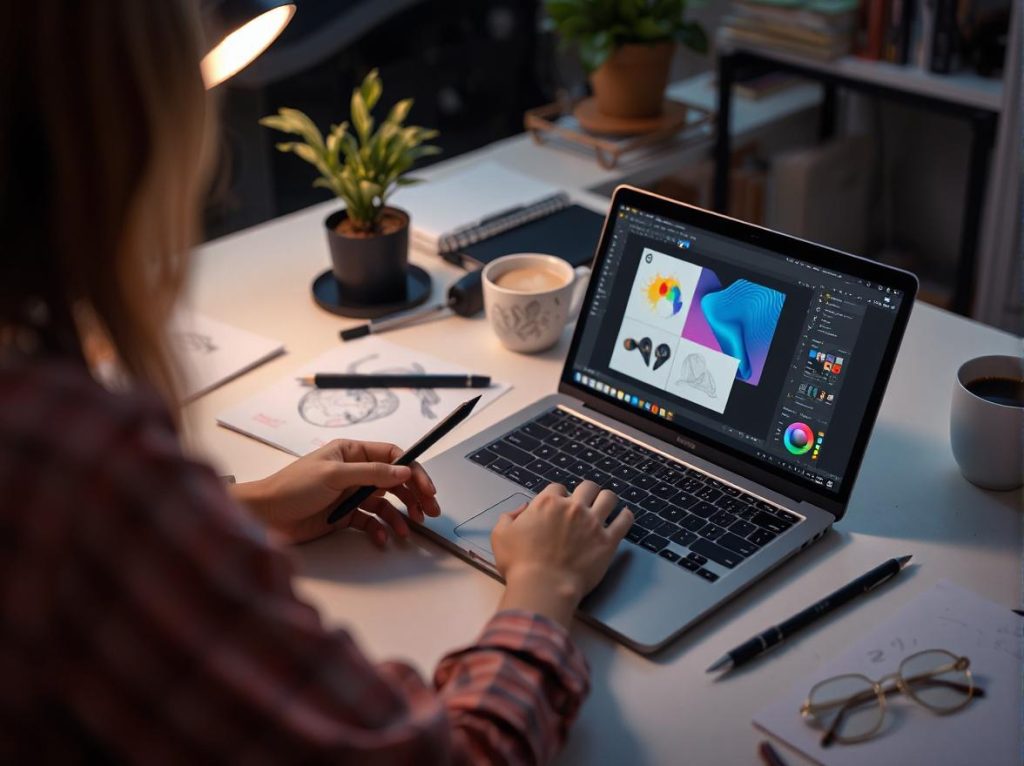Choosing the right laptop can be overwhelming with so many options available. Whether you’re using it for work, gaming, or creative tasks, understanding your requirements is key to finding the best fit. Here’s a guide to help you make the right decision.

1. Determine Your Purpose
The first step in selecting a laptop is to consider how you’ll use it. Some common categories are:
• General Use: For basic tasks like browsing the internet, social media, and office applications, an affordable laptop with modest specifications will do.
• Work or Study: If you need a laptop for work or school, focus on one that offers good performance, a comfortable keyboard, and long battery life.
• Gaming: Gaming laptops require more powerful processors, advanced graphics cards, and a higher refresh rate screen to handle the latest games.
• Creative Work: For tasks such as video editing, graphic design, or 3D rendering, you’ll need a high-performance laptop with a strong processor, dedicated graphics card, and high-resolution display.

2. Consider Performance
The performance of a laptop depends on its key components:
• Processor (CPU): The processor is the brain of the laptop. For basic use, an Intel Core i3 or AMD Ryzen 3 will suffice. For better multitasking and gaming, consider an Intel Core i5 or i7, or an AMD Ryzen 5 or 7.
• Memory (RAM): At least 8GB of RAM is recommended for smooth performance. If you plan to use resource-heavy applications or run multiple programs at once, go for 16GB or more.
• Storage: Solid State Drives (SSDs) are faster than traditional Hard Disk Drives (HDDs). Aim for at least 256GB of SSD storage, but if you store a lot of files or media, consider a laptop with 512GB or more.

3. Battery Life
If you need portability and plan to work or study on the go, choose a laptop with a long-lasting battery. Battery life can vary greatly depending on the laptop’s specifications and usage, but generally, look for models offering 8 hours or more of battery life for a full day of use.
4. Display
The display is another critical factor, especially for creatives and those who use their laptop for extended periods. When choosing a display:
• Size: The most common sizes range from 13 to 15 inches. If you want something more portable, go for a 13-inch model. For a better viewing experience, especially for media consumption, a 15-inch or larger screen is ideal.
• Resolution: Full HD (1920 x 1080) is standard and offers sharp, clear visuals. For higher clarity, especially for design and creative work, opt for a 4K display.
• Touchscreen: If you like the flexibility of touch input, a touchscreen might be a good option, especially for 2-in-1 laptops that can double as a tablet.
5. Portability
Laptops come in various weights and sizes. If you travel frequently or need something lightweight, look for a slim, ultrabook-style laptop that weighs around 2-3 pounds. On the other hand, if you need more power and don’t mind extra weight, gaming laptops and high-performance laptops tend to be bulkier.

6. Operating System
Choose an operating system based on your preferences and the software you’ll use:
• Windows: The most common and versatile OS, compatible with a wide range of software and hardware.
• macOS: Found on Apple laptops, macOS is ideal for users invested in the Apple ecosystem or those who use creative software like Final Cut Pro or Logic Pro.
• Chrome OS: Found on Chromebooks, it’s lightweight and perfect for users who mostly rely on web-based applications.
7. Additional Features
Consider other features that could enhance your experience, such as:
• Keyboard and Trackpad: A comfortable, responsive keyboard is essential for productivity, especially if you type a lot. A large, smooth trackpad is important for easy navigation.
• Ports: Make sure the laptop has enough ports for your needs, including USB-A, USB-C, HDMI, and an SD card reader if necessary.
• Webcam and Audio: If you attend virtual meetings or calls, a good quality webcam and microphone are important. Look for models with a 720p or 1080p camera for clear video.
8. Set a Budget
Your budget will play a significant role in the decision-making process. Basic laptops can start as low as $300, while high-end models with advanced specifications can cost $1,500 or more. Determine what features are most important to you and find a laptop that fits within your budget.
By carefully considering your needs and preferences, you’ll be able to select a laptop that meets your requirements and delivers excellent performance for years to come. Happy shopping!
Follow and stay updated with our work through various channels
Facebook : Baan Tee Chai
Email : baanteechai@gmail.com
